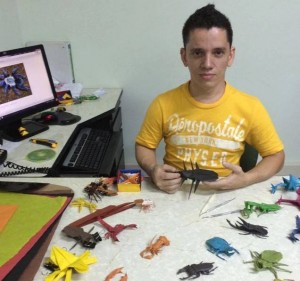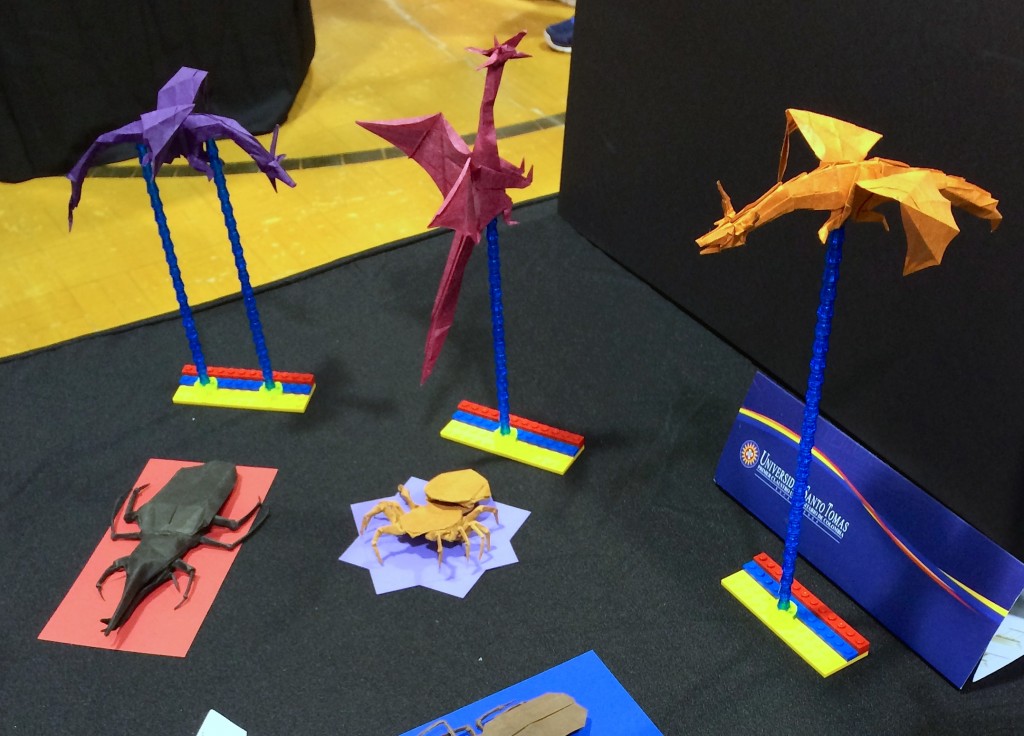The two main activities that I offer through Servimatices International are translations and origami. At the end of June, I had the opportunity to do both at the same time!

Whenever I can, I participate in OrigamiUSA’s annual convention, which is held in Manhattan. The event – which this year had more than 650 active participants (not including adults who were accompanying children) – includes classes, competitions, an exhibit (of extraordinary quality), and many opportunities to spend time and share origami with origami folders from all over the world. The special guests this year were evidence of the internationality of the event. One was Isa Klein, a Brazilian origami artist known especially for her modular designs and for her instructional videos; the other was Nick Robinson, origami teacher and prolific author of origami books, from the United Kingdom.

Words are not strictly necessary in order to share origami; it’s a very visual and tactile art, and there is a more or less uniform international system of symbols used in written diagrams. However, verbal communication does help, especially in classes with more than two or three people where not everyone can see up close what the teacher is doing. So this year, I decided to respond to the official petition for volunteer translators to interpret classes by teachers who don’t speak English.

There were already two translators for Portuguese to English, so I didn’t have the pleasure of translating a class for Isa Klein, although I did get to have some nice conversations with her; as is usually the case, she is not only a talented origami artist, but also a very nice person. However, they needed someone to help with Spanish, so I ended up translating (technically, doing consecutive interpreting) for a class taught by Diego Becerra. Diego teaches origami at the University of St. Thomas in Bucaramanga, Colombia. Although he is mostly known for his (amazing) insect designs, the model he taught in the class I translated was a dragon. It was the first time in a few years that I have done real-time interpreting, but there weren’t any problems; on the contrary, it was great experience which I hope to repeat on other occasions! After all, I got to learn a new origami model and translate at the same time – what more could I ask for?
Here is a photo of the origami that Diego Becerra had in the exhibition, including several examples of the dragon that he taught in the class I translated:

I loved his idea of using Lego® to build bases for his models! The colors of the bases are the colors of the Colombian flag; don’t forget, this was during the World Cup…